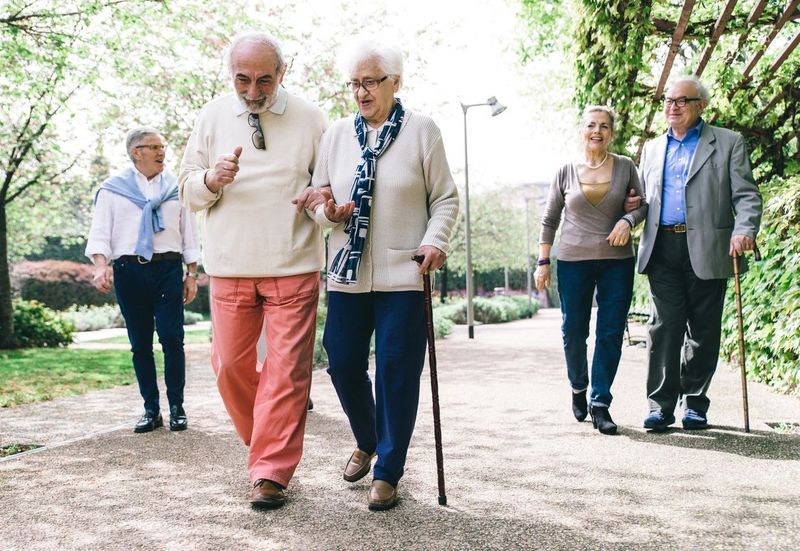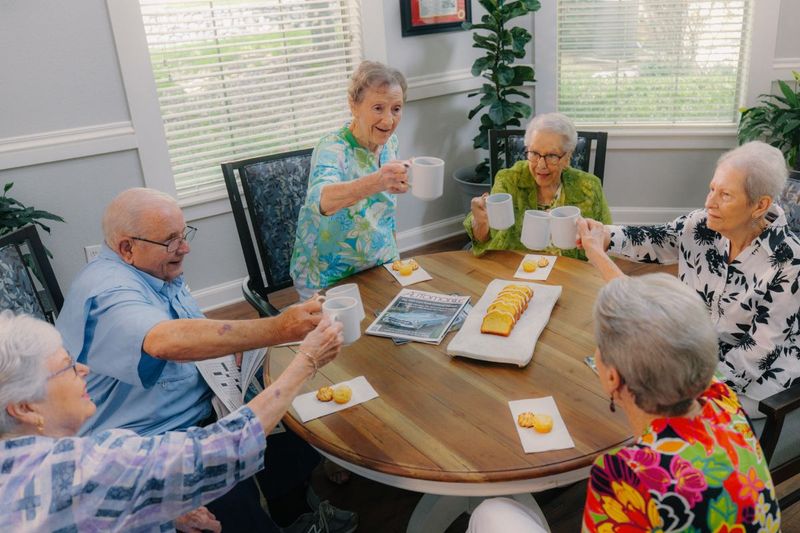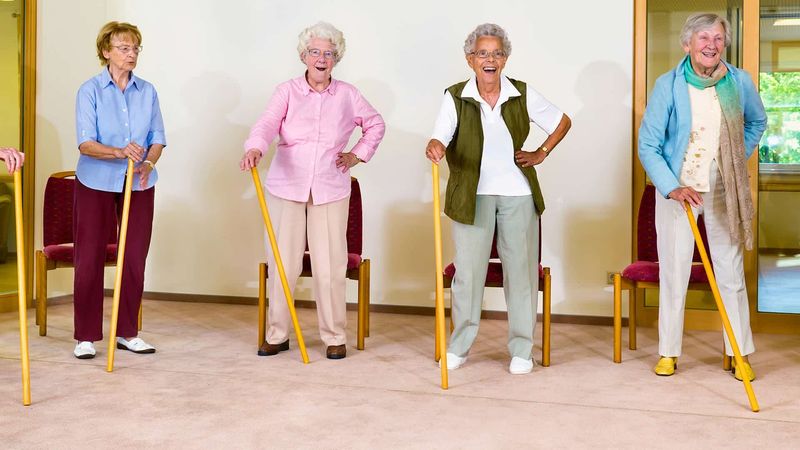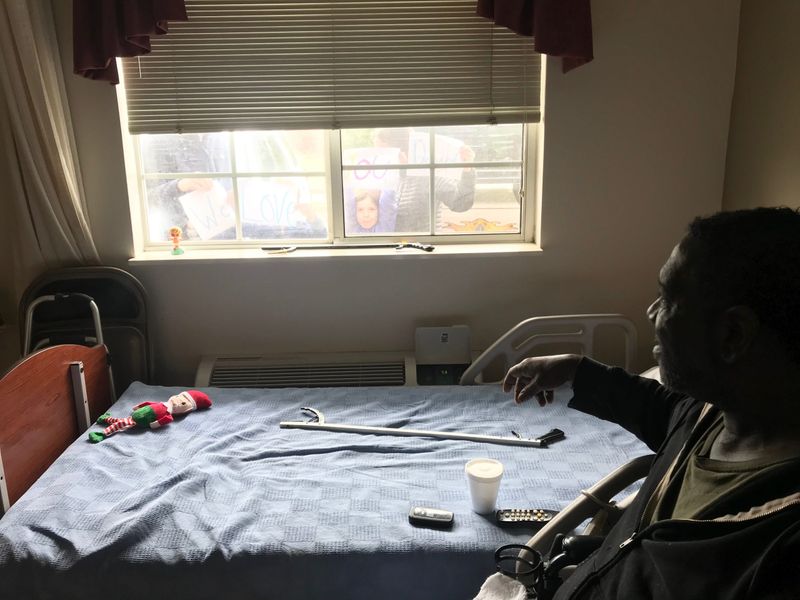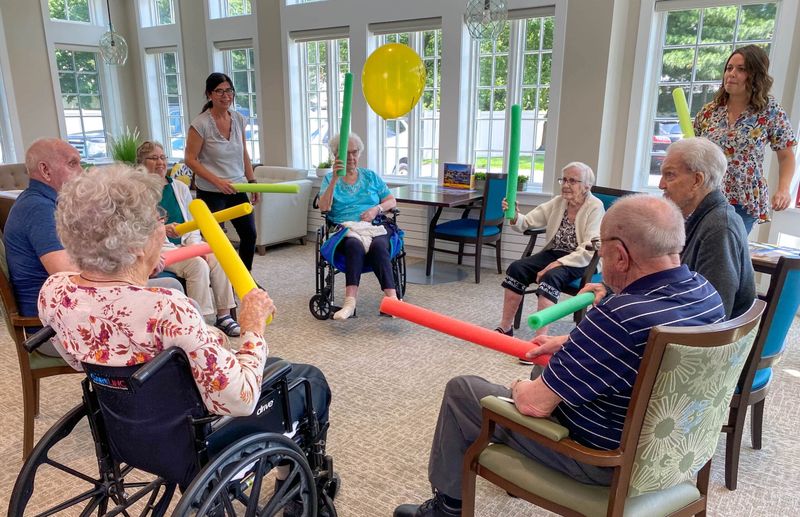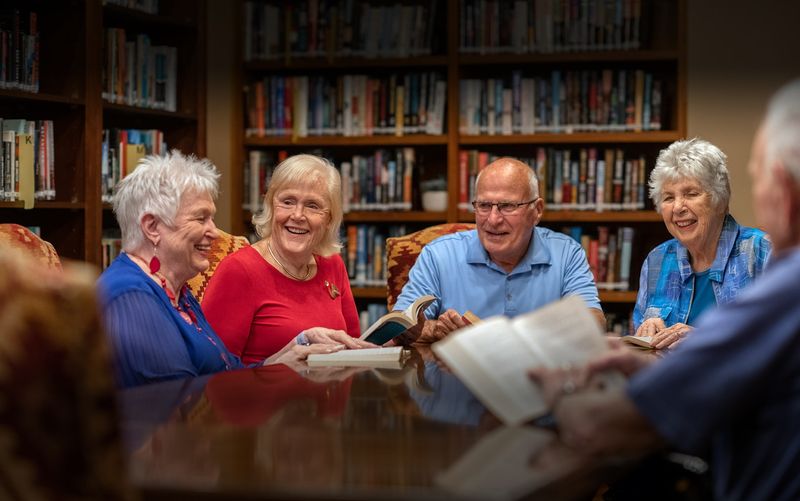Retirement communities, often seen as sanctuaries for the elderly, have rules that can feel reminiscent of 1950s boarding houses. While intended to protect residents and ensure smooth operations, these regulations sometimes come across as overly restrictive, raising a debate: are they protective measures or a form of oppression? This blog explores 18 such rules, reflecting on how they impact the daily lives of seniors. Join us in uncovering these regulations and assess whether they serve as beneficial guardianship or unnecessary constraints.
Curfew Restrictions
Residents in some retirement communities face a curfew, typically set around 9 PM. This rule aims to enhance security by ensuring everyone is accounted for at night. For some, this echoes the past when strict timekeeping was essential. Critics argue it limits personal freedom, restricting nighttime social activities. Residents may feel like teenagers again, with limited ability to enjoy evening events or late-night walks. Advocates, however, see it as a necessary precaution. By minimizing late-night disturbances, the curfew promotes a peaceful living environment. Ultimately, the curfew reflects the balance between safety and personal liberty.
Visitation Hours
Visitation hours are strictly enforced in various retirement communities, reminiscent of old boarding houses. Guests must adhere to specific time slots for visiting their loved ones, often between 10 AM and 6 PM. Proponents believe this ensures a restful atmosphere and prevents disruptions. However, opponents view it as a hindrance to spontaneous family gatherings or late-hour emotional support. It can strain relationships when friends and family are unable to visit at convenient times. This rule, while intended to maintain order, can feel isolating for residents, sparking debates about prioritizing tranquility over personal connections.
Meal Time Regulations
Many communities adhere to strict meal times, echoing the regimented schedules of boarding schools. Residents eat breakfast, lunch, and dinner at set hours, ensuring everyone receives meals on time. While some appreciate the routine, others find it stifling. The predictability can be comforting but may feel restrictive to those who prefer flexible dining experiences. Critics suggest this rigidity limits personal choice, preventing residents from enjoying meals at their leisure. However, regular meals ensure a well-balanced diet, crucial for seniors’ health. Balancing routine with flexibility remains a challenge, as communities strive to meet diverse needs.
Dress Code Enforcement
Certain retirement communities enforce a dress code, reminiscent of bygone eras. Residents must adhere to guidelines outlining acceptable attire for communal areas. Supporters argue it maintains decorum and community standards. Yet, opponents feel it infringes on personal expression, likening it to outdated norms. Residents may feel pressured to conform, suppressing individuality in favor of uniformity. While the dress code aims to create a cohesive environment, critics question its necessity. Encouraging personal style within respectful boundaries might strike a balance. This debate highlights the tension between personal freedom and communal harmony within these settings.
Room Inspection Policies
Periodic room inspections are a norm in some retirement communities, intended to ensure cleanliness and safety. Staff members conduct these checks, assessing living spaces for compliance with community standards. While this practice promotes hygiene and safety, critics argue it invades privacy. Residents may feel their personal space is monitored, echoing the oversight of past institutions. Proponents assert that inspections prevent hazards and maintain livable conditions. Striking a balance between oversight and privacy remains challenging. These inspections reflect broader questions about autonomy, as communities navigate respecting residents’ independence while ensuring their wellbeing.
Quiet Hours Enforcement
Quiet hours, often enforced from 10 PM to 7 AM, aim to ensure a peaceful environment. This practice mirrors the disciplined silence of boarding houses. While beneficial for those valuing rest, it can stifle social interactions for night owls. Residents may feel their lifestyle choices are restricted, unable to host evening gatherings or enjoy late-night hobbies. Advocates argue it fosters a tranquil atmosphere, essential for relaxation. Balancing quiet with vibrant community life is crucial, as residents seek harmony. This rule encapsulates the ongoing conversation about respecting diverse living preferences while ensuring collective peace.
Activity Participation Rules
In some communities, activity participation is not just encouraged but mandated. Residents are expected to join group events, fostering social interaction and engagement. Supporters argue this prevents isolation and promotes mental wellbeing. However, critics see it as a forced imposition, likening it to compulsory school activities. Those valuing solitude may feel pressured, as personal preferences are overlooked. While designed to benefit communal spirits, mandatory participation raises questions about autonomy. Offering optional activities with varied appeal could better cater to diverse interests, ensuring inclusivity without coercion. This rule exemplifies the challenge of balancing community engagement with personal freedom.
Pet Restrictions
Pet restrictions in retirement communities often parallel those of past institutions, dictating which animals can reside on premises. Typically, only small dogs or cats are permitted, limiting residents’ choices. Advocates argue these rules ensure safety and cleanliness, minimizing noise and allergies. Yet, critics view them as stifling companionship, particularly for those who find comfort in larger pets. Residents may feel their personal needs are unmet, as rules prioritize uniformity over individual preference. The debate continues over balancing community wellbeing with personal fulfilment, as pet policies reflect broader themes of conformity versus individuality.
Internet Usage Policies
Internet usage in retirement communities is often governed by strict policies. These rules, reminiscent of early digital age controls, limit online activity to specific hours or sites. Proponents argue this ensures security and prevents online hazards. However, critics claim it restricts access to information and communication. Residents may feel disconnected, unable to enjoy unrestricted digital experiences. As technology becomes integral to modern life, balancing safety with freedom is crucial. Communities grapple with updating policies to reflect current digital norms, ensuring residents enjoy autonomy without compromising security. This rule highlights ongoing discussions about digital access in communal settings.
Visitor Registration
Visitor registration is a standard practice, akin to check-ins at 1950s boarding houses. Guests must sign in upon arrival, a measure designed to enhance security. This practice, while ensuring safety, can feel bureaucratic and impersonal. Residents may see it as an intrusion, disrupting the ease of welcoming friends and family. Critics argue it creates an unwelcoming atmosphere, deterring spontaneous visits. Balancing security with hospitality remains challenging, as communities strive to protect residents while fostering open environments. This rule reflects broader themes of security versus freedom, as stakeholders debate the merits of controlled access.
Shared Facility Usage
Shared facilities in retirement communities, such as gyms or libraries, often come with usage rules. These guidelines, reminiscent of structured access to boarding house amenities, dictate when and how residents can utilize spaces. Supporters argue they ensure fair access and prevent overcrowding. However, critics view them as limiting, stifling spontaneous use. Residents may feel restricted, unable to enjoy facilities at their leisure. Balancing accessibility with order remains crucial, as community dynamics evolve. These rules reflect broader discussions about communal living, highlighting the need to accommodate diverse schedules and preferences while maintaining harmony.
Medication Management Policies
Medication management in retirement communities is strictly regulated, akin to the oversight seen in historic institutions. Staff often supervise the administration of medications, ensuring correct dosages and timing. Proponents argue this safeguards health, preventing errors. Yet, critics see it as infringing on personal autonomy, likening it to institutional control. Residents may feel their independence is compromised. While intended to protect, these policies can feel overly paternalistic. Balancing safety with independence remains key, as communities seek to respect personal agency while ensuring wellbeing. This rule underscores ongoing debates about autonomy and care in elderly settings.
Transportation Schedules
Transportation in retirement communities often follows fixed schedules, echoing the regimented routines of past boarding houses. Shuttle services operate at set times, facilitating outings and appointments. Supporters value the structure, ensuring timely access to essential services. However, critics argue it limits spontaneity, restricting personal freedom to travel independently. Residents may feel confined, unable to pursue impromptu trips. Balancing structured services with flexible options remains essential, as communities aim to cater to diverse mobility needs. This rule reflects broader conversations about autonomy and convenience, as stakeholders navigate the complexities of facilitating transportation for seniors.
Smoking Regulations
Smoking regulations in retirement communities often mirror those of the past, with designated areas and strict rules. These policies aim to minimize health risks and maintain clean environments. Proponents argue they protect non-smokers and promote wellbeing. Yet, critics view them as restrictive, limiting personal choice. Residents who smoke may feel marginalized, forced into specific areas or discouraged altogether. Balancing health concerns with personal freedoms remains contentious. As communities strive to accommodate diverse preferences, these regulations highlight broader themes of health, freedom, and coexistence in shared environments, sparking ongoing debates about individual rights.
Religious Services Attendance
Some retirement communities encourage or even require attendance at religious services, reflecting practices of past institutions. These policies aim to foster spiritual wellbeing and community spirit. While supporters appreciate the emphasis on shared values, critics argue it imposes beliefs and restricts personal choice. Residents may feel pressured to conform, attending services that do not align with their beliefs. Ensuring voluntary participation while promoting inclusivity is crucial, as communities navigate diverse spiritual needs. This rule highlights ongoing dialogues about freedom of belief and the role of spirituality in communal living, reflecting broader societal shifts.
Maintenance Request Procedures
Maintenance requests in retirement communities often follow formal procedures, akin to service requests in institutional settings. Residents must submit forms or requests for repairs, ensuring issues are tracked and addressed efficiently. Proponents value the organization, facilitating prompt responses. Yet, critics see it as bureaucratic, complicating simple requests. Residents may feel disempowered, dependent on processes for basic needs. Balancing efficiency with ease of access remains crucial, as communities aim to streamline services. This rule reflects broader discussions about empowerment, highlighting the need to simplify systems while maintaining effective operations within communal living spaces.
Community Meeting Attendance
Scheduled community meetings in retirement communities encourage participation in communal decision-making, echoing mandatory assemblies of past institutions. Residents are expected to attend, contributing to discussions about community issues. Supporters argue it fosters engagement and transparency. However, critics view it as an obligation, limiting personal choice. Residents valuing privacy may feel pressured, preferring to avoid public forums. Balancing involvement with autonomy remains key, as communities strive to foster inclusive environments. This rule reflects broader themes of participation and governance, highlighting ongoing debates about the role of communal decision-making in residential settings.
Room Personalization Limits
Room personalization in retirement communities often comes with limits, echoing constraints of past boarding houses. Guidelines dictate what decor is permissible, aiming to maintain uniformity and safety. Supporters argue these rules prevent overcrowding and potential hazards. Yet, critics see them as restrictive, stifling personal expression. Residents may feel unable to create homely environments, as regulations prioritize conformity over individuality. Balancing personalization with community standards remains challenging, as stakeholders debate the merits of standardized living versus personal comfort. This rule underscores broader discussions about privacy, individuality, and the essence of home within communal spaces.

